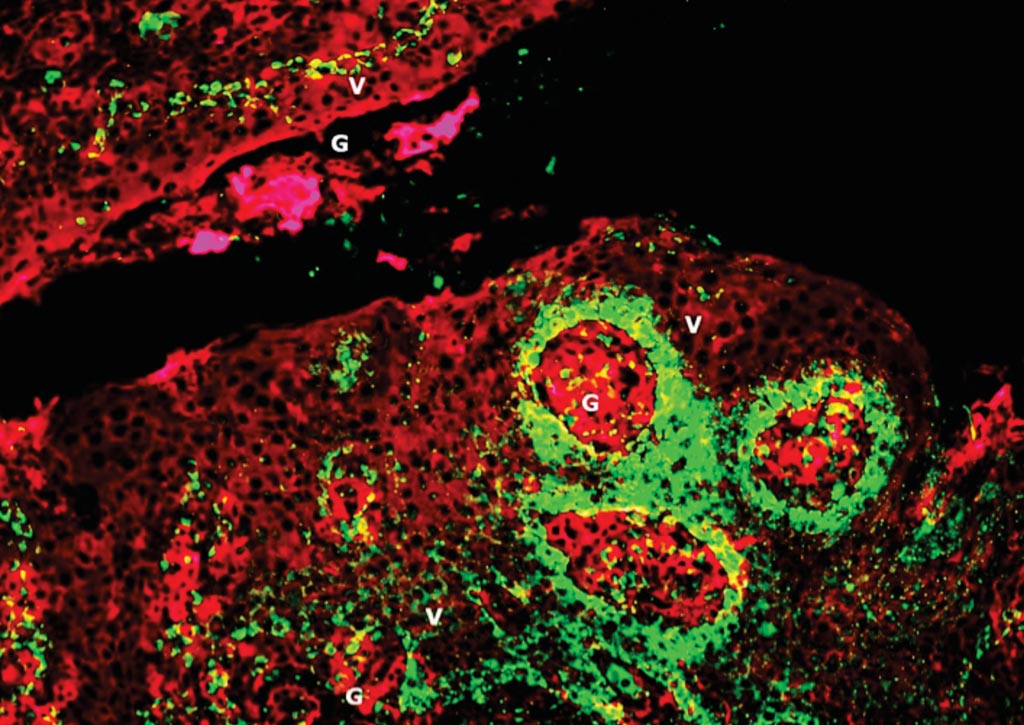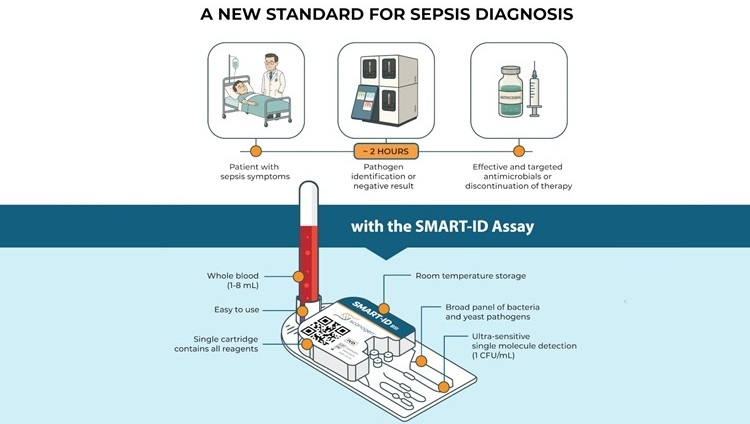HPV Found Hidden on Surface of Tonsils
By LabMedica International staff writers
Posted on 14 Feb 2018
Human papilloma virus (HPV), the culprit behind cervical cancer and some forms of head and neck cancer may hide in small pockets on the surface of tonsils in people not known to carry the virus.Posted on 14 Feb 2018
By mid-adulthood, most people have been exposed to HPV. The same strains that cause cervical cancer (mainly HPV 16 and 18) cause head and neck cancers. While verified tests exist to detect HPV in people before they develop cervical cancer, the same is not true for HPV-related head and neck cancers, which are expected to outnumber cervical cancer cases by 2020.

Image: Human papilloma virus (HPV) encased in biofilms inside tonsil crypts (pictured) may explain why the roughly 5% of HPV-infected people who develop cancer of the mouth or throat are not protected by their immune systems. Tonsil crypts with HPV are shown in green; epithelial and biofilm layers are shown in red (Photo courtesy of Dr. Katherine Rieth, MD).
Scientists at University of Rochester Medical Center (Rochester, NY, USA) carried out a retrospective, cross-sectional study using samples obtained from tonsils that were archived at a university hospital following elective nononcologic tonsillectomy from 2012 to 2015. Samples consisted of formalin-fixed paraffin embedded samples of tumor-free tonsil tissue from 102 adults between the ages of 20 and 39 years.
Human papillomavirus status was assessed by polymerase chain reaction, and high-risk subtypes 16 and 18 were assessed with quantitative polymerase chain reaction assay. Samples that demonstrated presence of HPV were then analyzed by in situ hybridization to localize the viral capsid protein. These samples were then stained with concanavalin A to establish biofilm presence and morphology. These samples were also stained with diamidino-phenylindole (DAPI) to visualize location of the virus in relation to cell nuclei. These data were then assembled for aggregate analysis to colocalize HPV in the biofilm of the tonsillar crypts.
The scientists found that in 102 otherwise healthy adults, of whom 55 were female, the overall prevalence of HPV in tonsils was 4.9%; and high-risk type 16 or 18, was 3.9%. In this sample population, in situ hybridization colocalized HPV virus to the biofilm of the tonsillar crypts. In every case, HPV was found in tonsil crypts biofilms. The group believes HPV is shed from the tonsil during an active infection and gets trapped in the biofilm, where it may be protected from immune attack. In the crypts, the virus likely lays in wait for an opportunity to reinstate infection or invade the tonsil tissue to develop cancer.
Matthew C. Miller, MD, associate professor of Otolaryngology and Neurosurgery, and lead investigator, said, “Given the lack of universal HPV immunization and the potential for the virus to evade the immune system even in individuals with detectable HPV in their blood, our findings could have far-reaching implications for identifying people at risk of developing HPV-related head and neck cancers and ultimately preventing them.” The study was published on January 25, 2018, in the journal JAMA Otolaryngology–Head & Neck Surgery.
Related Links:
University of Rochester Medical Center














